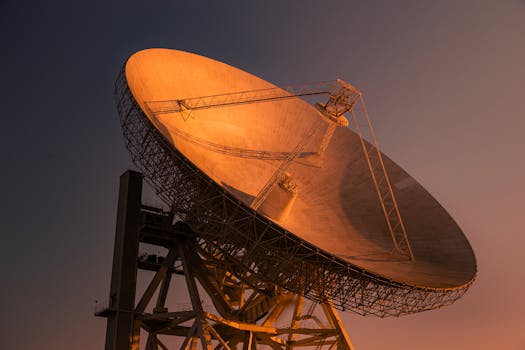
MEO Satellites: Revolutionizing Global Connectivity with Medium Earth Orbit Technology
MEO satellites, or Medium Earth Orbit satellites, are a type of satellite that operates in an orbit between 2,000 and 36,000 kilometers above the Earth’s surface. This orbit is higher than Low Earth Orbit (LEO) satellites but lower than Geostationary Orbit (GEO) satellites. MEO satellites are designed to provide a unique combination of low latency and wide coverage, making them an attractive solution for a variety of applications, including telecommunications, navigation, and Earth observation.
At the beginning of the MEO satellites development, the main goal was to provide a cost-effective alternative to traditional GEO satellites, which are often used for telecommunications and television broadcasting. However, as the technology evolved, it became clear that MEO satellites had the potential to offer much more than just a lower-cost solution. With their lower orbit, MEO satellites can provide lower latency and higher bandwidth than GEO satellites, making them ideal for applications that require fast and reliable data transmission, such as video conferencing, online gaming, and cloud computing.
How MEO Satellites Work
MEO satellites work by transmitting and receiving data to and from Earth stations, which are typically located on the ground or in a fixed location. The satellites use a combination of radio frequencies and antennas to communicate with the Earth stations, and they can be designed to operate in a variety of frequency bands, including Ka-band, Ku-band, and C-band. The data is then transmitted to its final destination, which can be another Earth station, a network of satellites, or a combination of both.
One of the key advantages of MEO satellites is their ability to provide a high level of redundancy and fault tolerance. Because they operate in a constellation of multiple satellites, if one satellite fails or is taken out of service, the other satellites in the constellation can continue to provide coverage, ensuring that the network remains operational. This makes MEO satellites an attractive solution for applications that require high availability and reliability, such as financial transactions, emergency services, and critical infrastructure.
Applications of MEO Satellites
MEO satellites have a wide range of applications, including telecommunications, navigation, Earth observation, and scientific research. In the telecommunications sector, MEO satellites are used to provide broadband internet access, mobile connectivity, and video transmission services. They are also used for navigation purposes, such as providing location information and timing signals for GPS and other satellite navigation systems.
In the Earth observation sector, MEO satellites are used to collect data on the environment, climate, and natural resources. They can be equipped with a variety of sensors and instruments, such as cameras, spectrometers, and radar, to collect data on the Earth’s surface and atmosphere. This data can be used for a range of applications, including weather forecasting, crop monitoring, and disaster response.
Future of MEO Satellites
The future of MEO satellites looks promising, with a growing demand for low-latency and high-bandwidth connectivity. As the telecommunications industry continues to evolve, MEO satellites are likely to play an increasingly important role in providing global connectivity, especially in areas where traditional fiber-optic networks are not available. With the development of new technologies, such as 5G and the Internet of Things (IoT), MEO satellites are well-positioned to provide the necessary infrastructure to support these applications.
In conclusion, MEO satellites are revolutionizing the telecommunications industry with their unique combination of low latency and wide coverage. With their ability to provide high-bandwidth and low-latency connectivity, MEO satellites are an attractive solution for a range of applications, including telecommunications, navigation, and Earth observation. As the demand for global connectivity continues to grow, MEO satellites are likely to play an increasingly important role in providing the necessary infrastructure to support this demand.

